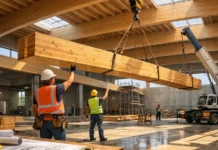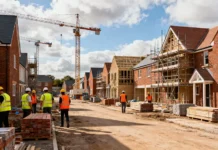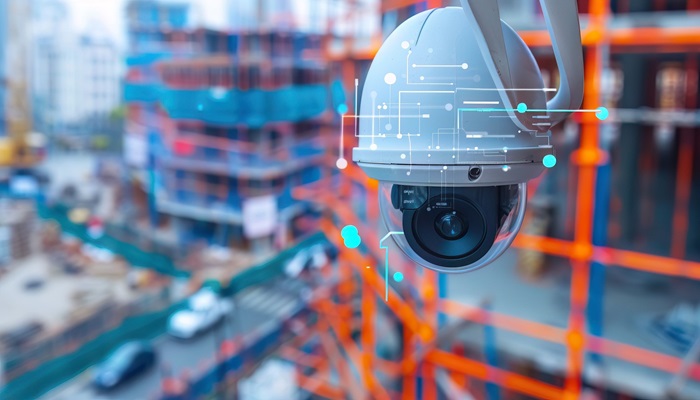Construction sites are dynamic environments where accidents can happen if proper safety measures are not in place. Setting up a construction site monitoring system is a critical step in ensuring the safety of workers and the overall success of your project. With the right one in place, you can track progress, identify potential problems, and make informed decisions.
To make the most out of having a robust monitoring system, read on to learn how to set it up effectively.
Understand Why You Need Monitoring
Monitoring can help you maintain quality control. You can oversee materials used, the performance of equipment, and the work of contractors. Referred to as ‘Baustellenüberwachung’ in Germany, this oversight allows you to know that everything aligns with your project specifications. It emphasizes the importance of diligent monitoring in construction projects.
Determine Your Monitoring Objectives
You need to set clear objectives for your monitoring system. What do you want to achieve? Are you focusing on safety, productivity, or resource management? Identifying your goals will guide your selection of tools and processes.
For instance, if your primary concern is safety, you might prioritize monitoring compliance with safety protocols. If you’re more interested in productivity, tracking work completion rates will be essential. Whatever your focus, having well-defined objectives will lead to a more effective monitoring system.
Choose the Right Monitoring System
The first step is to choose the right monitoring system for your requirements. There are a variety of options available, including:
- CCTV cameras: These are the most common type of monitoring system. They can be used to record footage of the construction site, which can be reviewed later to identify potential hazards.
- Drones: Drones can be used to get an aerial view of the construction site. This can be helpful for identifying potential hazards that may be difficult to see from the ground.
- Sensors: Sensors can be used to monitor various aspects of the construction site, such as temperature, humidity, and noise levels. This data can be used to identify potential hazards and improve safety.
- Software solutions: Software solutions can be used to manage and analyze data collected by monitoring systems. This can help you to identify trends and patterns that may indicate potential hazards.
When choosing a monitoring system, consider the following factors:
- The size and complexity of your project: Larger and more complex projects will require a more sophisticated monitoring system.
- Your budget: Monitoring systems can vary widely in price. Therefore, consider a system that fits within your budget.
- Your specific needs: Consider what you want to achieve with the monitoring system. Do you want to improve safety, track progress, or identify potential hazards?
Once you have considered these factors, you can narrow down your options and choose the best monitoring system that meets your unique business needs.
Install the Monitoring System
Once you’ve selected a system, you’ll need to carefully plan and execute the installation process. This may require the help of a professional technician who is experienced with construction site monitoring systems.
When choosing installation locations, prioritize areas that provide a clear and unobstructed view of the entire construction site. Consider factors such as potential blind spots, lighting conditions, and the presence of any obstructions that might interfere with the system’s effectiveness.
It’s also important to make sure that the installation complies with all relevant safety regulations and building codes. This may involve obtaining necessary permits or approvals from local authorities.
During the installation process, pay close attention to the technician’s instructions and follow their guidance. This will help to ensure that the system is installed correctly and efficiently.

Test the Monitoring System
Before you start using the monitoring system, test if it’s working properly. This involves recording footage, reviewing data, and verifying that the system is providing accurate information.
For example, you might test the cameras by recording footage of a known object and checking if the image is clear and sharp. You can also test the sensors by measuring their readings against known values. By testing the system thoroughly, you can identify and address any issues before it goes into full operation.
Train Your Team
Once the monitoring system is up and running, you’ll need to train your team on how to use it effectively. This includes teaching them how to access the system, review footage, and report any issues.
In addition, consider providing training on how to use the system to improve safety, efficiency, and overall project performance. For example, you might teach your team how to use the system to identify potential hazards, track progress, and monitor the performance of equipment.
Monitor the Site Regularly
To make a construction site safe and ensure your construction project’s efficiency, it’s essential to do regular monitoring. Review footage daily, check for any signs of trouble, and take corrective action as needed.
Conclusion
Setting up a construction site monitoring system is a valuable investment that can help you assure the success of your project. By following these steps, you can choose the right system, install it properly, and use it to improve safety, efficiency, and overall project performance.






























